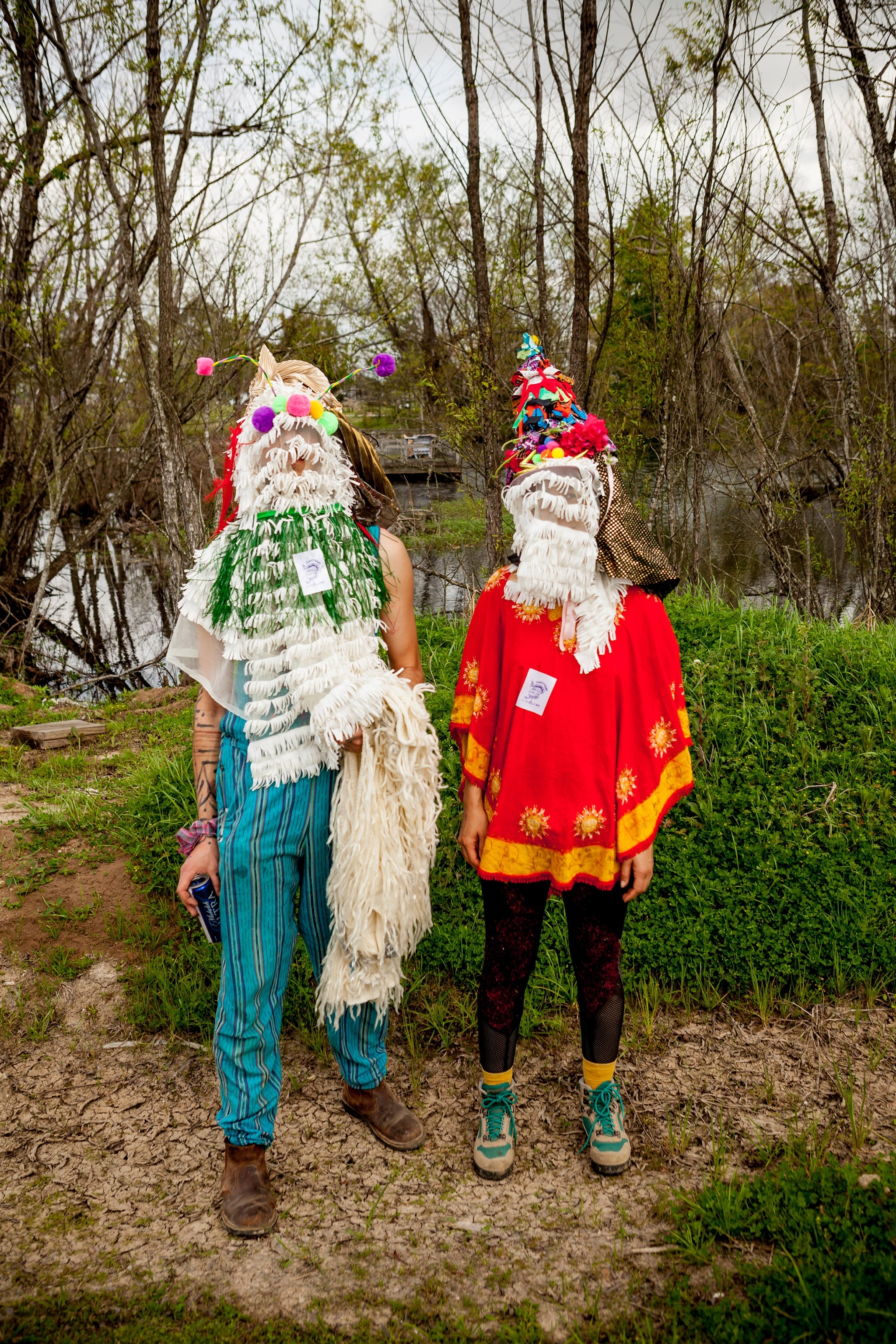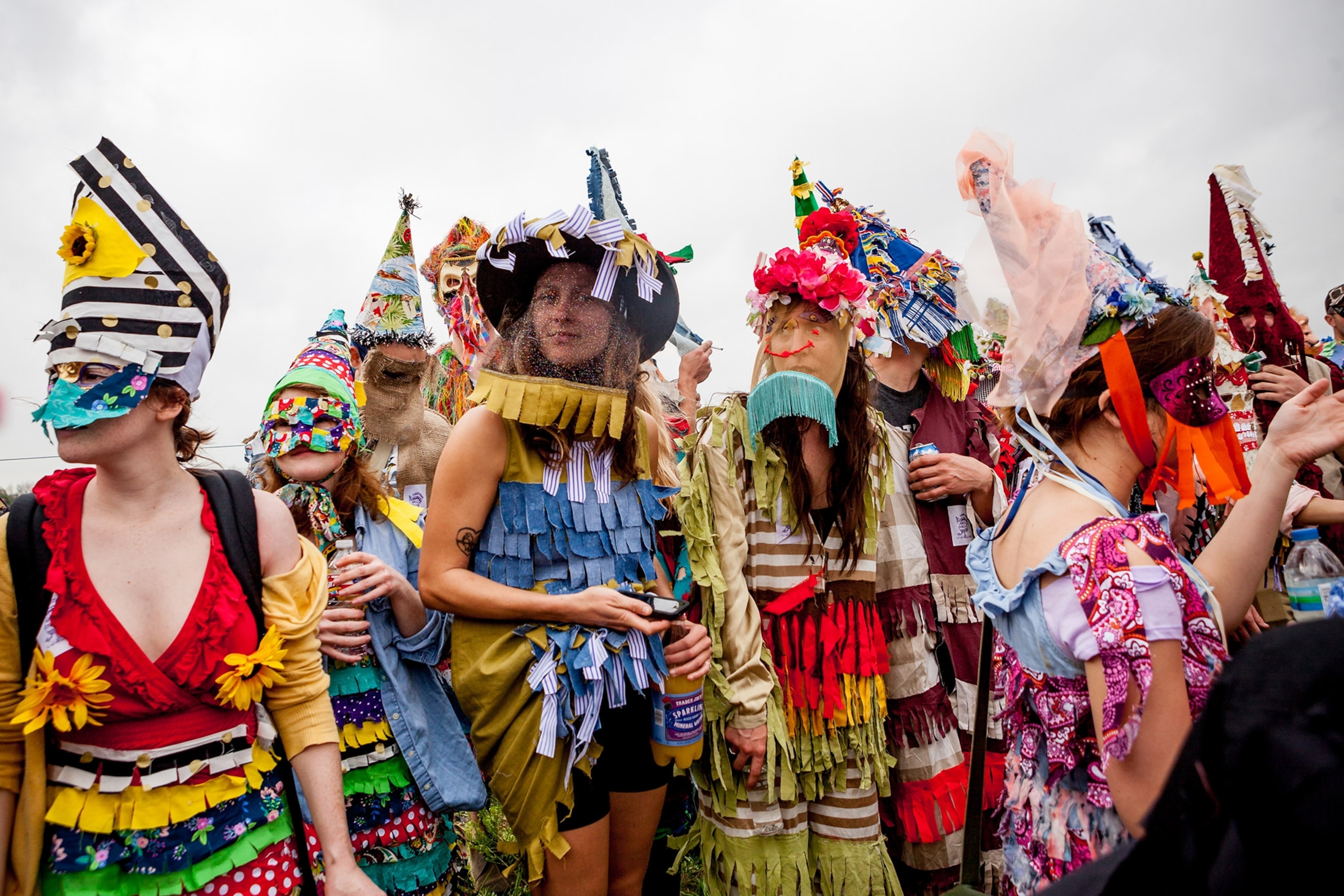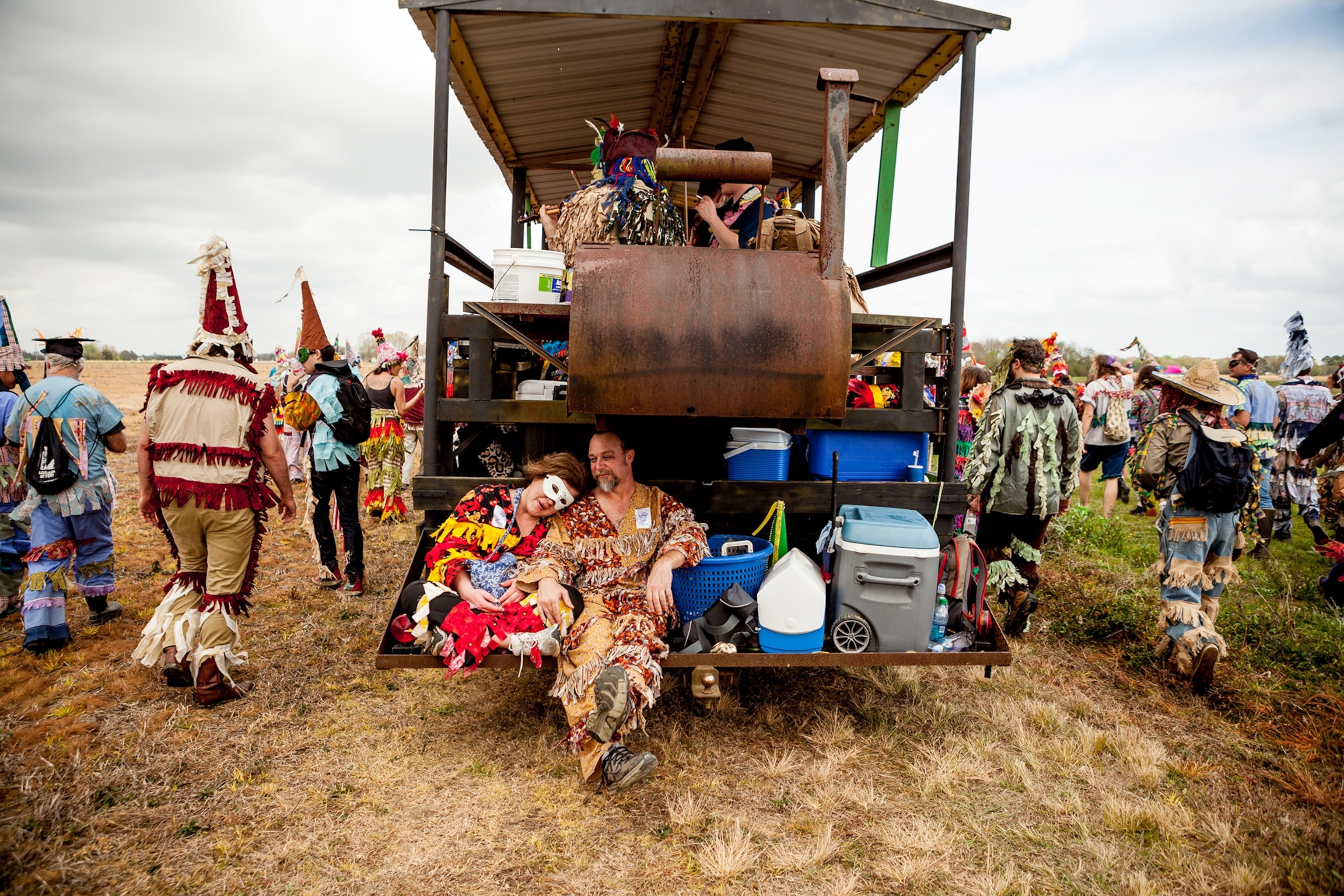Here’s Mardi Gras like you’ve never seen it
In Louisiana’s Cajun country, the Courir de Mardi Gras festival brings a frenzy of mischief-making.

It’s dawn, and a crowd is gathering on a farm outside of Eunice, Louisiana. Although it’s Carnival time in New Orleans, about three hours away, this crowd has no passion for beads or sequined high heels. Here, chicken-chasing rules the day.
The Courir de Mardi Gras, a lesser known country cousin of the Fat Tuesday celebrations, is a frenzied foot race rooted in Cajun tradition and held in communities in South Louisiana on the Tuesday before Ash Wednesday. The rural run across prairies and around bayous traces its origins to medieval France, where the poor would disguise themselves in masks and conical caps called capuchons and put on exuberant performances in exchange for food.


The traditional costumes live on today, and for many, the deep-rooted, rural affair is bigger than Christmas. Except on this day, there’s no reward for the good girls and boys: Like many Carnival traditions in formerly French territories, Cajun Mardi Gras focuses on merry mischief-making.
Creative anarchy
While many courirs are closed to out-of-towners and women, the Faquetaigue Courir de Mardi Gras is uniquely inclusive. Started in 2006 by Grammy-winning musician and producer Joel Savoy and fellow musician Linzay Young, the fete—which welcomes between 500 to 900 revelers and is separate from Eunice’s official event—is all honoring what the Cajuns do best: “pass a good time.”
Courir de Mardi Gras might seem like one big party, but it’s not for the faint of heart: This primal, Cajun-style endurance race (replete with fiddles and dancing) rollicks over several miles at a quick pace. By participating, you become known as a “Mardi Gras,” which leads to fun greetings: “Hey, Mardi Gras—happy Mardi Gras!”
“Cajun Mardi Gras is trying to make fun, to shake power structures and tickle society,” explains Dr. Barry Jean Ancelet, Cajun folklorist and author of Capitaine, Voyage Ton Flag. “I’m always amazed at how it catalyzes a level of creativity that wouldn’t happen on a different day or without a mask on.”

Chicken-chasing & mischief-making
The appointed Capitaine, who leads the ritual chaos, initiates newbies: Everyone wears a costume, no spectators are allowed, and everyone’s expected to join in on the exuberant begging at each house along the route. Breaking the rules means risking consequence from Les Vilaines and La Force, the masked, whip-wielding men and women who playfully keep the revelers in line.
Following a full-hearted rendition of “La Vieille Chanson de Mardi Gras” (an ancient song that doubles as a statement of purpose), the impish Mardi Gras crash through the prairie like a wild, fringe-covered wave. There’s an interesting duality at play. One moment, you might see a marauder heckling a chicken, and seconds later stopping to tenderly stroke a donkey’s nose or thank a homeowner.



Related: Here’s the perfect three-day road trip through Cajun country.
After a few hours, celebrants break for boudin, a spicy sausage treat. While some snack in the grass, the wiliest revelers form a human pyramid to scale a greased, 25-foot pole topped with a chicken perched on a wooden plank. Many failed attempts later, a proud Mardi Gras is seen writhing at the top, triumphantly waving the chicken in the air. At Savoy’s Faquetaigue celebration, the chicken is then released unharmed—not cooked in gumbo, as tradition originally dictated, and as still happens at other courirs.

Courir de Mardi Gras may be rowdy, but it’s far from mindless: it’s a meaningful nod to Cajun culture and community. On the Faquetaigue run, this spiritual connection is most tangible when the group stops to pay homage at the grave of legendary Cajun musician Dennis McGee. Things typically wind down around 2 p.m., when music and cauldrons of rich gumbo await at Savoy’s property.
Know before you go
This year, Fat Tuesday falls on February 25. The group sets out at 8 a.m., so arrive by 7:45 to register; bring $20 cash and a backpack for water (and adult beverages). Find more details at the event’s Facebook page.
Remember: No costume, no Mardi Gras! To make your capuchon, roll poster board into a cone and decorate with fabric. Masks are often fashioned of window screen, but let your creativity shine through. Ditto with your fringed outfit: All you need is an old shirt and slacks, clothes to cut up, and a glue gun.


Finally, Mardi Gras is about pure fun—so standing around like a sad sack is off-limits. Dance your heart out, enjoy the thrill of the chase, and relish celebrating life Cajun-style, if only for a day.



























